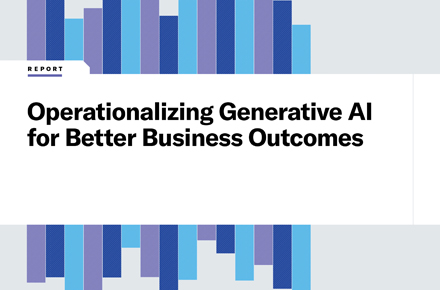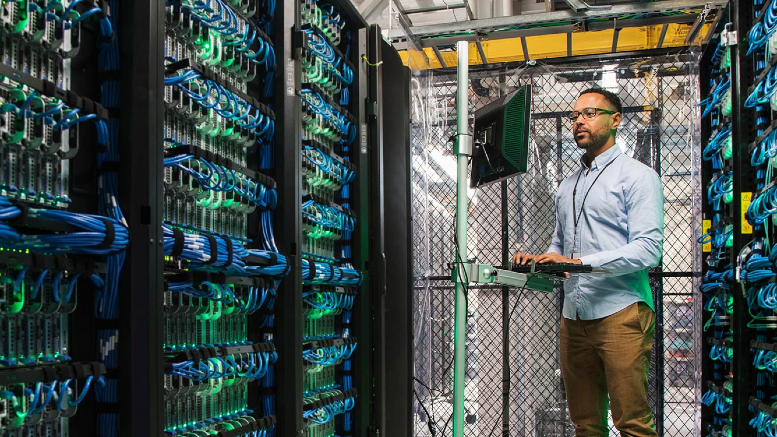Competing with enterprise resources on a mid-market budget
noviembre 25, 2025 / Mike Thomson
Short on time? Read the key takeaways:
- Mid-market companies face the same technological complexity as enterprises but with a fraction of the resources, creating tension between maintaining operations and investing in transformation
- Infrastructure optimization should come first, followed by digital workplace improvements to enhance workforce productivity and competitive advantage
- Strategic partnerships can augment lean internal teams, providing specialized expertise and economies of scale without sacrificing control over critical operations
- Success requires urgent, strategic prioritization - focusing investments where they'll have the greatest business impact rather than trying to master every emerging technology
Mid-market companies are in a difficult position: they face the same technological disruptions as Fortune 500 enterprises while operating with a fraction of the resources.
As AI, cloud transformation, and cybersecurity demands reshape the business landscape, how can these companies compete? For this discussion, mid-market refers to organizations with annual revenue between $1B and $5B.
Mike Thomson, CEO of Unisys, shares his perspective on the unique challenges mid-market companies face and the strategic path forward.
Q1: Mike, let's start with context. How would you characterize the current state of mid-market companies and their technology challenges?
Mike: The mid-market is at an inflection point. These companies are required to run incredibly lean operations to compete with their enterprise counterparts, having optimized for efficiency over the past decade. But now they're being asked to transform at the same pace as enterprises that have 10x their IT budget. This creates real tension between maintaining day-to-day operations and investing in the future.
Q2: What specific challenges are you seeing across Unisys’ mid-market clients?
Mike: The level of complexity that the mid-market faces is no different than the enterprise market. The difference is that they don't have the capacity to invest at the same level. This presents significant opportunities for strategic partnerships and new approaches to technology adoption.
The core issue is capacity. Mid-market companies typically rely on lean in-house teams who are doing exceptional work. This naturally limits their bandwidth for innovation because they're focused on keeping critical operations running smoothly. They're staffed for business-as-usual support, yet they're facing sea changes in technology. The challenge is finding time to evaluate new technologies and determine the best fit while managing daily operations. Meanwhile, they're competing with enterprise competitors that have entire teams dedicated to innovation.
Q3: Can you paint a picture of how this resource constraint manifests in daily operations?
Mike: Take service desk operations, for example. While enterprises are implementing generative AI or agentic AI to transform their service desk, mid-market companies have to maintain full staffing for these functions. The capital expenditure required for new technology can be challenging to justify.
We're already seeing a significant deflection from human support to automated AI-driven support with our service experience accelerator, along with an increase in user engagement and a decrease in service desk ticket abandonment. These are real results from clients using the solution today. While enterprises have dedicated teams to implement these capabilities, mid-market companies need partners who can deliver these outcomes without requiring massive internal resources.
This same pattern repeats across their entire technology estate, including IT field services, device-as-a-service, cloud transformation, application transformation, cloud orchestration, and even on-premises repatriation. They face the same transformation opportunities but must be more selective about where and how to invest their limited resources.
Q4: Regarding limited resources, how is the current security landscape affecting mid-market spending priorities?
Mike: Security requirements aren't going away, and threats continue to evolve. The challenge is that most mid-market companies can't justify staffing entire security operations centers, yet they need enterprise-grade protection. This is where the right partnerships become essential – not to outsource accountability, but to access specialized expertise and proven frameworks that would take years and significant capital to build internally. Working with providers who have deep security capabilities and strong partnerships, like our relationships with Dell and Microsoft, means you can implement robust security without diverting your lean teams from other critical priorities.
The opportunity here is to find ways to automate routine operations and orchestrate existing systems more efficiently. By doing that, companies can free up resources to reinvest in critical areas like security. It requires creative thinking and often new approaches to long-standing processes.
Q5: Given these constraints, where should mid-market companies focus their transformation efforts?
Mike: You have to be strategic about sequencing. When evaluating the technology estate, both user-facing systems and infrastructure, I recommend addressing the infrastructure component first.
Every mid-market client has a different starting point. Some are entirely on-premises, others are partially in the cloud. A good first step is often consolidating vendors where possible and understanding your technology partners' roadmaps. Identify your most critical systems – what's essential to running the business – and then determine the best deployment model- cloud, on-premises, or a hybrid approach.
We recently worked with a public sector client in Australia where we proactively identified an opportunity to optimize their hybrid infrastructure by eliminating a high-cost platform. This resulted in migration project work and ongoing managed services, but more importantly, it generated millions of dollars in annual cost savings for the client. That's the kind of infrastructure optimization that frees up budget for other priorities.
Q6: Once infrastructure is addressed, what comes next?
Mike: After stabilizing and optimizing infrastructure, the focus shifts to empowering your workforce – those who depend on that infrastructure daily. The question becomes: how do we equip them with modern tools that enhance productivity? Different user groups will have different needs, and the technology should reflect that.
The goal is workforce productivity. Better tools, better access, and better digital workplace solutions all contribute to competitive advantage. If I'm advising a mid-market technology leader, this two-phase approach, infrastructure first, then digital workplace, provides a clear roadmap.
Q7: Many mid-market companies have traditionally managed everything internally. How do you see the role of strategic partnerships evolving?
Mike: We're seeing a shift in how mid-market leaders think about partnerships. Many have successfully built strong internal teams and processes. The opportunity now is to augment those capabilities strategically.
Visionary leaders identify areas where external expertise or economies of scale can amplify their team's impact while maintaining control over strategic direction and critical operations.
What mid-market companies often tell us is that they value personalized service and attention, which they're simply not receiving from larger providers. They want partners who understand their business, not just vendors pushing standardized solutions.
At Unisys, we've serviced our top 50 clients for an average of 20 years. That longevity comes from focusing on their long-term success rather than chasing short-term technology trends. Mid-market companies deserve that same level of commitment and personalized partnership.
The most successful partnerships we see are true collaborations where external providers work as extensions of the internal team, bringing specialized skills and scale when needed.
Q8: Looking ahead, what's your advice for mid-market technology leaders?
Mike: Start by recognizing that the pace of technological change requires new approaches. No organization, enterprise or mid-market can master every emerging technology internally.
Then be strategic about prioritization. Focus your investments where they'll have the greatest business impact, not just where the buzz is loudest.
And build an ecosystem of partners who understand your business and can grow with you. Find true collaborators who have skin in your success. Be willing to walk away from solutions or vendors that prioritize cost-cutting over value creation. The cheapest option rarely delivers the best outcome. Look for partners who are invested in your growth and can expand their value as your needs evolve.
But most importantly, slow down enough to speed up. There's tremendous pressure to adopt AI, automate everything, and move to the cloud, and that pressure is real. However, throwing technology at problems without understanding the underlying business case is expensive and risky.
Ask yourself: What specific outcomes am I after? How will I measure success? What capabilities do I need to build internally versus what should I partner for?
Mid-market success requires deliberate choices based on clear business value, rather than being the fastest mover or fearing being left behind.




















